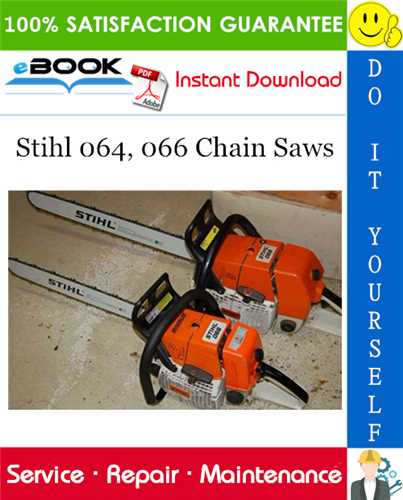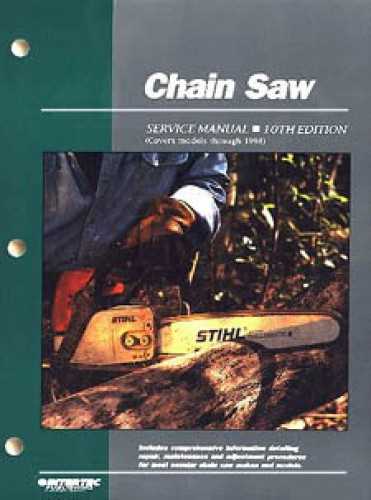Loss of power: Reduced engine performance, especially under load, can stem from fu
Replacing Chainsaw Starter Components
Maintaining the starting mechanism of a cutting tool is essential for its optimal performance. Over time, various components can wear out or become damaged, leading to difficulties in starting the engine. This section provides insights into the process of replacing these essential parts to ensure reliable operation.
Identifying Faulty Components
Before proceeding with any replacements, it is crucial to diagnose the specific parts that may be malfunctioning. Common issues can arise from the starter rope, recoil spring, or the starter housing itself. Signs such as difficulty in pulling the starter cord, excessive friction, or unusual noises often indicate a need for component replacement.
Replacement Process
Once the faulty components are identified, follow these steps to perform the replacement:
- Disassemble the Starter: Begin by removing the screws that secure the starter assembly to the tool. Carefully detach the starter cover to access the internal components.
- Replace Damaged Parts: Inspect each part for wear and tear. Replace any damaged or worn-out components, such as the recoil spring or starter rope, ensuring they are compatible with the tool.
- Reassemble and Test: After replacing the necessary components, reassemble the starter cover and secure it with screws. Finally, test the tool to ensure proper functioning and easy start-up.
Regular maintenance of the starting mechanism not only extends the life of the tool but also enhances user safety and efficiency.
Inspecting and Cleaning the Air Filter
Regular examination and maintenance of the air filter are crucial for optimal performance and longevity of the equipment. A clean filter ensures proper airflow, preventing engine damage and maintaining efficiency during operation.
Visual Inspection

Begin by visually inspecting the air filter for any visible dirt, debris, or damage. Check for tears or holes that could compromise its effectiveness. If the filter appears excessively dirty or worn, it should be cleaned or replaced as necessary.
Cleaning Process
To clean the air filter, gently remove it from its housing. Use compressed air or a soft brush to eliminate accumulated dust and dirt. If the filter is heavily soiled, washing it with mild soap and water may be necessary. Allow it to dry completely before reinstalling it to ensure optimal performance.
Guide to Replacing the Spark Plug
Replacing the spark plug is a fundamental maintenance task that ensures optimal performance of your engine. A worn or faulty spark plug can lead to issues such as poor starting, decreased power, and increased fuel consumption. Regularly checking and changing the spark plug can significantly enhance the efficiency and longevity of your equipment.
Tools Needed
- New spark plug
- Socket wrench or spark plug socket
- Torque wrench
- Gap gauge
- Clean cloth or rag
Steps for Replacement
- Ensure the engine is off and cool. Disconnect the ignition wire to prevent accidental starting.
- Use a socket wrench to remove the old spark plug by turning it counterclockwise.
- Inspect the old spark plug for wear, deposits, or damage to determine if replacement is necessary.
- Check the gap on the new spark plug using a gap gauge and adjust if needed according to specifications.
- Insert the new spark plug into the cylinder head and tighten it by hand until snug.
- Use a torque wrench to tighten the spark plug to the manufacturer’s recommended torque setting.
- Reconnect the ignition wire and check the operation of the engine.
Chain Sharpening and Maintenance Tips
Proper maintenance of cutting tools is essential for optimal performance and longevity. Regularly sharpening the chain not only enhances efficiency but also ensures safer operation. This section provides essential techniques and advice for keeping your cutting tool in prime condition.
Sharpening Techniques
To achieve the best results, use a round file that matches the size of the chain’s cutter. Maintain a consistent angle while sharpening, typically between 25 to 35 degrees. Ensure that each cutter is sharpened equally to prevent uneven wear and tear. It’s advisable to use a guide or a sharpening jig for precise angles.
Maintenance Practices
In addition to sharpening, regular inspection of the chain is crucial. Check for signs of wear, such as dullness, cracks, or broken teeth. Lubrication is equally important; use a high-quality chain oil to reduce friction and heat during operation. Cleaning the chain after use helps remove debris and prolongs its life.
Adjusting the Chain Tension Correctly
Proper tensioning of the cutting chain is crucial for ensuring optimal performance and safety while operating a saw. An adequately adjusted chain reduces the risk of accidents and enhances cutting efficiency, allowing for smoother operation. This section will guide you through the process of achieving the correct tension.
Understanding Chain Tension
The tension of the chain affects its interaction with the bar. If the chain is too loose, it can come off during use, posing a significant safety hazard. Conversely, if it is too tight, it can cause excessive wear on both the chain and the bar, leading to premature failure. Therefore, maintaining the right balance is essential for durability and functionality.
Steps to Adjust the Tension
To adjust the chain tension, follow these steps:
- Start by ensuring the engine is off and the tool is securely placed on a flat surface.
- Locate the tensioning mechanism, which is typically situated near the guide bar.
- Using a suitable tool, turn the tensioning screw clockwise to tighten or counterclockwise to loosen the chain.
- Check the chain tension by pulling it away from the bar; there should be a slight gap, allowing the chain to move freely but not too loose.
- Secure the adjustment by tightening any bolts or screws that were loosened during the process.
Regular checks and adjustments will ensure the chain remains in optimal condition, promoting safer and more effective use of your equipment.
Fuel System Maintenance Guidelines
Proper upkeep of the fuel system is essential for optimal performance and longevity of your equipment. Regular attention to the various components ensures efficient operation and minimizes the risk of malfunction. Below are recommended practices for maintaining the fuel system effectively.
| Task |
Frequency |
Notes |
| Inspect fuel lines for leaks or damage |
Monthly |
Replace any worn or cracked hoses immediately. |
| Clean or replace fuel filter |
Every 3 months |
A clogged filter can hinder fuel flow, affecting performance. |
| Check fuel quality |
Before each use |
Use fresh fuel; old or contaminated fuel can cause starting issues. |
| Inspect and clean carburetor |
Annually |
Ensure all jets are clear to maintain efficient fuel-air mixture. |
| Drain fuel if not in use for an extended period |
As needed |
This prevents varnish buildup in the fuel system. |
Proper Lubrication for Optimal Performance
Ensuring appropriate lubrication is crucial for the effective functioning of any machinery. Proper maintenance of lubrication systems significantly enhances the longevity and efficiency of equipment. Regular attention to this aspect can prevent unnecessary wear and tear, ensuring that the machinery operates smoothly under various conditions.
Types of Lubricants
Different types of lubricants are suitable for various components of the machinery. Understanding the specific requirements for each part is essential for optimal performance:
- Oil: Ideal for reducing friction and wear in moving parts.
- Grease: Provides a thicker consistency, suitable for components under heavy load.
- Dry Lubricants: Useful for environments where wet lubricants may attract dust or debris.
Lubrication Schedule
Establishing a routine lubrication schedule is vital for maintaining the effectiveness of the lubrication process. Consider the following practices:
- Check lubricant levels regularly to prevent depletion.
- Clean the lubrication points before applying new lubricant.
- Follow manufacturer recommendations for lubricant type and application frequency.
Testing and Replacing Ignition System Parts
The ignition system plays a crucial role in the performance of small engines, ensuring efficient combustion and optimal operation. Regular assessment and timely replacement of faulty components can significantly enhance the engine’s reliability and longevity. Understanding how to evaluate these parts effectively is essential for maintaining peak performance.
Evaluating Ignition Components
Begin by inspecting the spark plug, a vital component that ignites the air-fuel mixture. Check for wear, carbon buildup, or damage to the electrode. Replace the spark plug if it shows signs of excessive wear or is clogged. Additionally, assess the ignition coil for continuity using a multimeter; a faulty coil may prevent the engine from starting.
Replacing Malfunctioning Parts
If any components are found to be defective, such as the spark plug or ignition coil, it is essential to replace them with high-quality parts. Ensure compatibility with your engine model for optimal performance. After installation, conduct a test run to confirm that the ignition system functions correctly and the engine operates smoothly.


